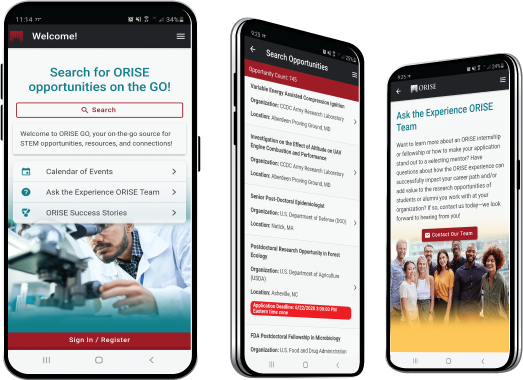Nonlinear and Time Varying Antenna-like Structures
Create and release your Profile on Zintellect – Postdoctoral applicants must create an account and complete a profile in the on-line application system. Please note: your resume/CV may not exceed 2 pages.
Complete your application – Enter the rest of the information required for the IC Postdoc Program Research Opportunity. The application itself contains detailed instructions for each one of these components: availability, citizenship, transcripts, dissertation abstract, publication and presentation plan, and information about your Research Advisor co-applicant.
Additional information about the IC Postdoctoral Research Fellowship Program is available on the program website located at: https://orise.orau.gov/icpostdoc/index.html.
If you have questions, send an email to ICPostdoc@orau.org. Please include the reference code for this opportunity in your email.
Research Topic Description, including Problem Statement:
Electrically small antennas (ESAs)—antennas whose dimensions are considerably smaller than the antenna’s resonant wavelength—are of interest in numerous applications. Fundamental physics limits the performance of ESAs. This performance limit, explored by Harold Wheeler in 1947 and refined over the years by Lan Jen Chu and others, has proven to be indomitable against passive antenna designs. One approach to beat this fundamental limit is to contravene the assumptions it is based on, specifically linearity and time-invariance (LTI). Wheeler reasoned that the volume of a passive ESA limits the power it can extract from an incident field, as indicated by a small radiation resistance (P = I2R) and a corresponding small bandwidth. However, the power extraction potential of antenna-like structures with time-varying resistive or reactive loads has yet to be established, theoretically, numerically, or experimentally. For example, it is possible that an improved signal-to-noise ratio in a non-LTI antenna-like structure could be indicative of a larger effective bandwidth, as related by Shannon’s theorem for channel capacity.
Applicants are encouraged to explore other possible performance advantages beyond bandwidth. Advances in the field of non-LTI antenna-like structures could result in a paradigm shift, significantly impacting how the Intelligence Community (IC) collects radio frequency (RF) information wirelessly. This IC Postdoctoral Research topic seeks innovative approaches to any of the following:
- Theoretically determine the performance limits of non-LTI antenna-like structures and compare them to traditional antenna limit.
- Numerically model such structures.
- Develop experimental techniques to measure the performance of non-LTI antenna-like structures.
Example Approaches:
The existing performance bounds (gain-bandwidth product, energy relations) are well understood for non-LTI RF devices such as mixers and amplifiers. It is expected that the theory governing these devices might inform the theory of non-LTI antenna-like devices. Applicants are encouraged to propose any viable approach.
The most common three categories of numerical modeling techniques fall under Method of Moments (MoM), Finite Element Method (FEM), and Finite Difference Time Domain (FDTD). The MoM formulation produces a system of linear equations that are not ideally suited for non-LTI problems. However, piecewise linear approximations to the nonlinear/time varying system may be able to approximate the solution. FEM models transient responses through the Ordinary Differential Equations. The ability of FEM to model transient response of a nonlinear/time varying antenna makes it a viable solution. FDTD is well suited for modeling a nonlinear/time varying antenna because the time stepping coupled differential equations allow for easy time variation of the boundary conditions. It is expected that time varying antennas, through time varying boundary conditions, can be readily implemented using FDTD. Applicants are encouraged to pursue novel and possibly hybrid approaches. It is expected that numerical modeling will be of critical importance to inform the theory of non-LTI antenna-like structures.
There are many examples from the scientific literature of antenna designs implementing nonlinear and time variable components. Applicants are encouraged to propose designs building on these or to propose novel ones, as well as experimental approaches to characterize fabricated designs.
Relevance to the Intelligence Community:
The IC often employs electrically small antennas (ESA)—antennas whose dimensions are considerably smaller than the antenna’s resonant wavelength. Fundamental physics limits the performance of ESAs. Advances in the field of non-LTI antenna-like structures could result in a paradigm shift, significantly impacting how the IC collects RF information wirelessly.
Key Words: Antenna, Electrically-Small, Nonlinear, Time-Varying, Wheeler, Chu, Shannon, Radio Frequency, Method of Moments, MoM, Finite Element Method, FEM, and Finite Difference Time Domain, FDTD
Postdoc Eligibility
- U.S. citizens only
- Ph.D. in a relevant field must be completed before beginning the appointment and within five years of the application deadline
- Proposal must be associated with an accredited U.S. university, college, or U.S. government laboratory
- Eligible candidates may only receive one award from the IC Postdoctoral Research Fellowship Program
Research Advisor Eligibility
- Must be an employee of an accredited U.S. university, college or U.S. government laboratory
- Are not required to be U.S. citizens
- Citizenship: U.S. Citizen Only
- Degree: Doctoral Degree.
-
Discipline(s):
- Chemistry and Materials Sciences (12 )
- Communications and Graphics Design (2 )
- Computer, Information, and Data Sciences (17 )
- Earth and Geosciences (21 )
- Engineering (27 )
- Environmental and Marine Sciences (14 )
- Life Health and Medical Sciences (45 )
- Mathematics and Statistics (10 )
- Other Non-Science & Engineering (2 )
- Physics (16 )
- Science & Engineering-related (1 )
- Social and Behavioral Sciences (27 )

 ORISE GO
ORISE GO

The ORISE GO mobile app helps you stay engaged, connected and informed during your ORISE experience – from application, to offer, through your appointment and even as an ORISE alum!





